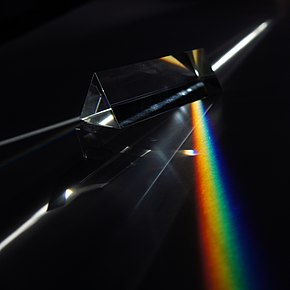**1. Properties and Behavior of Light:**
– Electromagnetic spectrum categorizes light into various wavelengths.
– Visible light ranges from 420-680 nm.
– Light consists of photons causing electronic excitation in molecules.
– Light speed in vacuum is 299,792,458 m/s.
– Light can be considered as waves and particles.
– Key properties include intensity, propagation direction, frequency, and polarization.
**2. Optics and Light Interaction:**
– Optics studies light interaction with matter.
– Transparent objects allow light transmission, while opaque objects reflect or absorb light.
– Refraction and reflection phenomena provide insights into light properties.
– Lenses manipulate light for devices like microscopes and telescopes.
– Spectacles and contact lenses use refraction for vision correction.
**3. Light Sources and Generation Mechanisms:**
– Natural sources include the Sun, historically fire, and modern electric lighting.
– Light can be generated through particle acceleration, chemical reactions, and fluorescence.
– Light sources emit visible light through processes like electroluminescence and scintillation.
– Various mechanisms like bioluminescence and Cherenkov radiation produce light.
**4. Theories and Discoveries in Light Science:**
– Historical theories date back to ancient Greek scholars and Indian philosophies.
– Descartes, Newton, and Huygens proposed theories on light properties.
– Wave theory explained diffraction and polarization phenomena.
– Electromagnetic theory linked light to electromagnetism.
– Quantum theory introduced light quanta and particle-wave duality.
**5. Applications and Impacts of Light:**
– Light pressure affects physical systems and can drive mechanisms.
– Solar energy applications include solar sails for spacecraft propulsion.
– Nanotechnology leverages light manipulation for technological advancements.
– Light’s impact on optical engineering and its role in photosynthesis.
– Quantum optics and information theory explore light’s quantum states and applications in research.
Light, visible light, or visible radiation is electromagnetic radiation that can be perceived by the human eye. Visible light spans the visible spectrum and is usually defined as having wavelengths in the range of 400–700 nanometres (nm), corresponding to frequencies of 750–420 terahertz. The visible band sits adjacent to the infrared (with longer wavelengths and lower frequencies) and the ultraviolet (with shorter wavelengths and higher frequencies), called collectively optical radiation.

In physics, the term "light" may refer more broadly to electromagnetic radiation of any wavelength, whether visible or not. In this sense, gamma rays, X-rays, microwaves and radio waves are also light. The primary properties of light are intensity, propagation direction, frequency or wavelength spectrum, and polarization. Its speed in vacuum, 299792458 m/s, is one of the fundamental constants of nature. Like all types of electromagnetic radiation, visible light propagates by massless elementary particles called photons that represents the quanta of electromagnetic field, and can be analyzed as both waves and particles. The study of light, known as optics, is an important research area in modern physics.
The main source of natural light on Earth is the Sun. Historically, another important source of light for humans has been fire, from ancient campfires to modern kerosene lamps. With the development of electric lights and power systems, electric lighting has effectively replaced firelight.
